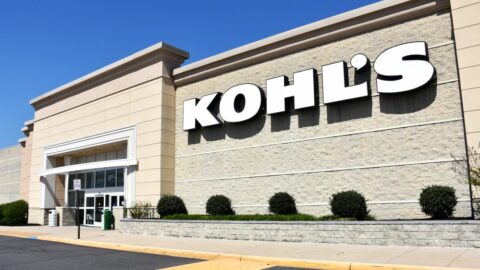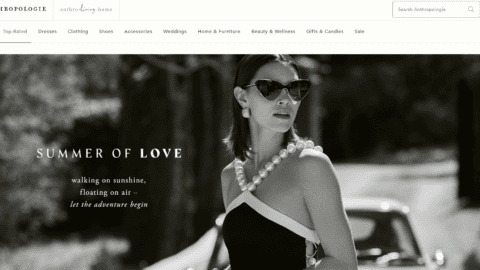By Gib Bassett, Director of Marketing, Signal
The end game to reaping the benefits of cross channel marketing is to obtain a 360- degree view of customer channel preferences and permissions. In the process, marketers identify and grow the base of customers who desire a fully cross channel relationship with their business — across mobile, email and social media. As a segment, this is a highly engaged audience that represents a business’ most valuable customers.
To call these customers to action most effectively, marketers must develop, orchestrate and measure marketing efforts that span channels. Doing so recognizes that various digital channels serve different customer needs as part of the business/customer relationship lifecycle. Cross channel marketing is a rather breakthrough idea, because it takes this notion a step beyond the mutually exclusive targeting of customers within channels. Cross channel marketing instead seeks to utilize each channel’s strength in unison to create a better outcome more efficiently than could otherwise be possible using multiple, disconnected applications and databases.
Mobile Strengths
Text messaging sometimes gets a bad rap relative to more content-rich digital mediums such as email and the web, yet it’s that simplicity that makes SMS the one communication method shared by almost every mobile phone user. The beauty of SMS text messaging is that it meets a marketer’s hurdle for maximum reach, while also offering the opportunity to tailor calls to action on a one to one basis, just as you could with any typical CRM system. Few marketers have seized that opportunity, however.
SMS is also real time and its destination is not an email inbox stuffed with spam or multiple messages to sift through. Instead, text messages are based purely on a highly structured opt in process that makes SMS completely different than email. Moreover, consumers have little choice but to see their messages upon receipt, a timeliness SMS shares with standard telephone communications. Also like phone communications, SMS can be completely interactive, which offers marketers the ability to create highly personalized interactions that, for example, prompt consumers for answers to questions that can in turn trigger unique offers or other calls to action, such as directions to a retailer’s nearest store.
It is the timeliness and brevity of SMS that makes it ideally suited to registering customers for offer programs, such as coupons and loyalty clubs, where a call to action mentioned in an email, on a billboard, or on in store signage provides the context for the business/consumer relationship. SMS is the digital glue that connects consumers to the business relationship.
More advanced applications of text messaging bring the relationship full circle by embedding trackable short URLs that point to mobile fulfillment web sites or landing pages featuring additional information that comprise the overall marketing campaign. These URLs shorten a standard long form web site address so that it takes up as little room within the confines of the 160 character limit of text messaging (leaving more space for the marketer’s message), and click through behavior is trackable.
Email Strengths
Email is such a mature medium that it’s really only meaningful to talk about its strengths relative to mobile or other channels such as social media.
Since email can be highly visual and content rich, it presents the marketer with the chance to really “wow” the audience with a compelling message. Yet, the problem persists of inbox competition, making it hard to stand out among the many hundreds of emails consumers can receive on a weekly basis.
This single reason is why many email providers are beginning to embrace the cross channel message. For email to remain a relevant and meaningful contributor to a marketer’s success, it must adapt to the realities of inbox competition, the utility of social networking sites to connect email offers with a consumer’s “friends,” and tying email into cross channel programs as a confirmation step or as the result of a trigger pulled upon a consumer taking action in another channel (like participating in a mobile promotion such as a Sweepstakes).
Social Media Strengths
It’s hard for any business to ignore social networks. Unless moderated to some extent, they can become real time, totally visible, unstaffed customer support centers where unhappy customers have the chance to share their displeasure with thousands — and influence their behavior.
The upside is that most consumers follow a brand on social sites not to log complaints, but rather to learn about upcoming new products, events, offers or other incentives. To those ends, social media can appear a lot like a one way marketing tactic such as email, in that consumers do not expect or desire direct interactions from the brands they follow.
This is why social media may be motive force behind the cross channel movement. Without strong connections to other digital channels, marketers are handcuffed by the limitations of what can realistically be achieved using social networks as a marketing channel. Right there before the marketer’s eyes are a legion of mostly positive consumers who will respond readily to one-to-one, relevant and targeted communications. That is, if you can connect with them appropriately.
Stitching to All Together
Having laid out some generalizations about the core strengths of the primary digital channels, it’s next interesting to consider how a Cross Channel Campaign Management system might take the best parts of each to help the marketer execute a more effective program. Following is an example.
Multi-Location Retailers/Restaurants
Retailers and food services companies (Quick Serve Restaurants) sell products that are usually best communicated visually, therefore email is a logical approach used for many years to convey new or seasonal product availability, upcoming sales, and printable coupons scannable at the point of sale. Yet, competition for inbox visibility combined with the universal nature of SMS makes text messaging a compelling tactic to drive floor traffic and sales. Even if offers are segmented, text lacks the visual “pop” that can compel a consumer to take action.
In an ideal world, a text message offer would not only be segmented for relevancy, but present recipients the chance to see the product or offer in question. If the customer were a smart phone user, a short URL might link to a mobile optimized web page featuring visual detail. If the phone were only text-enabled, the consumer could be prompted to submit an email address in real time, to which a message would be sent that features the same visual details for reading on a computer. In both cases, consumers could be presented the option of sharing the offer with their social networks, a capability commonplace with many email tools, yet of questionable value on a stand-alone basis given the low visibility of emails in jammed up inboxes. All this would be managed by the Cross Channel Campaign Management system.
The same offer could be posted to social sites, linking off to a web form requiring registration to obtain details of the offer. It is during this process that the marketer can request mobile and email opt-in and social networking identities to grow the cross channel segment. Knowing customer social “handles” presents the chance to create and monitor a sentiment variable for these high value customers — to say nothing of directly messaging them with unique offers and incentives that could in turn be shared with the larger social universe.
Retail businesses and Quick Serve Restaurant (QSR) businesses face different marketing problems, but they also have a great deal in common. Purchase frequency for food service versus hard goods is generally greater, while the average ticket value is typically lower. This places emphasis on timeliness as much as any other variable for QSRs. Think about it like this: human nature is to take more time making a considered purchase like clothes or a television, versus the urge to fill a hungry stomach, which could be interpreted as an impulse buy.
Given the latency between seeing an email and redeeming an offer for a food item, there is vastly greater timeliness with text message offers. Yet as with retailers, QSRs rely on imagery to pull customers into stores. So you could imagine an email offer including a link to redeem a portable text message offer with an expiration date. A Cross Channel Campaign Management system would manage this process, and in so doing satisfy a consumer’s need for something visual along with a portable offer. And the marketer’s needs are satisfied by including an expiration date, creating a sense of urgency.
Marketers have a lot of tools at their disposal to drive desirable customer behavior. The challenge is to consider how various digital channels serve the needs of consumers in different ways — their need for information, timely communications and the influence of social networks. Stitching marketing efforts together wisely across channels is far more effective at calling customers to action than marketing within silos. Some businesses are doing these very things today, but with separate systems and databases, creating an inefficiently that Cross Channel Campaign Management systems promise to eliminate.
Gib Bassett works for Signal, a SaaS provider of integrated mobile, email and social media marketing solutions. He oversees the company’s marketing efforts including thought leadership, public relations, demand creation and marketing communications. You can reach him at gib@signalhq.com.












